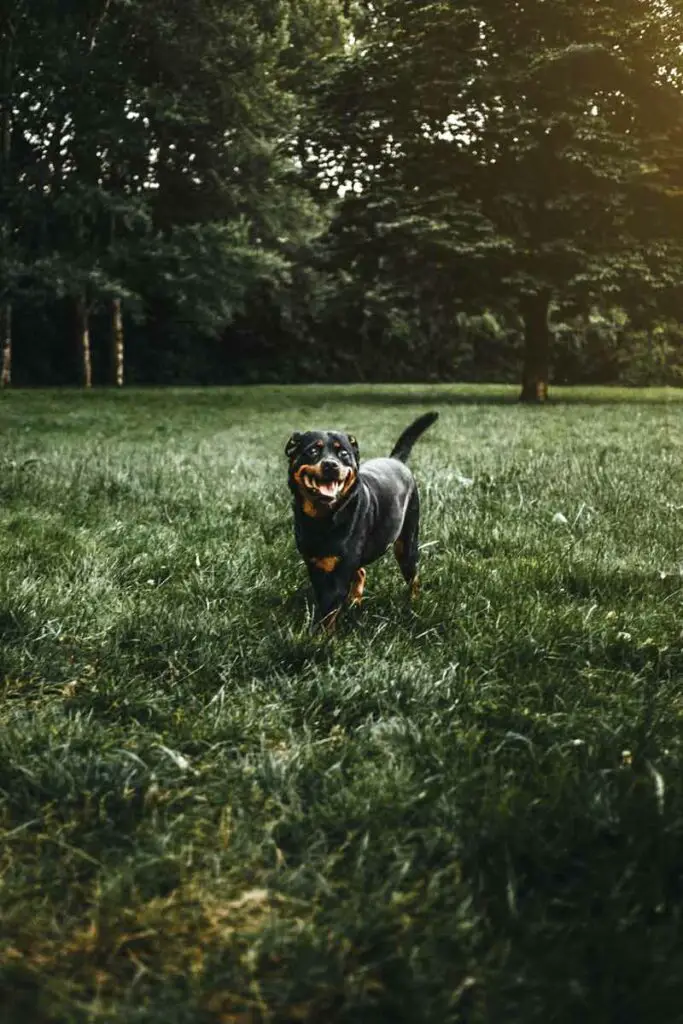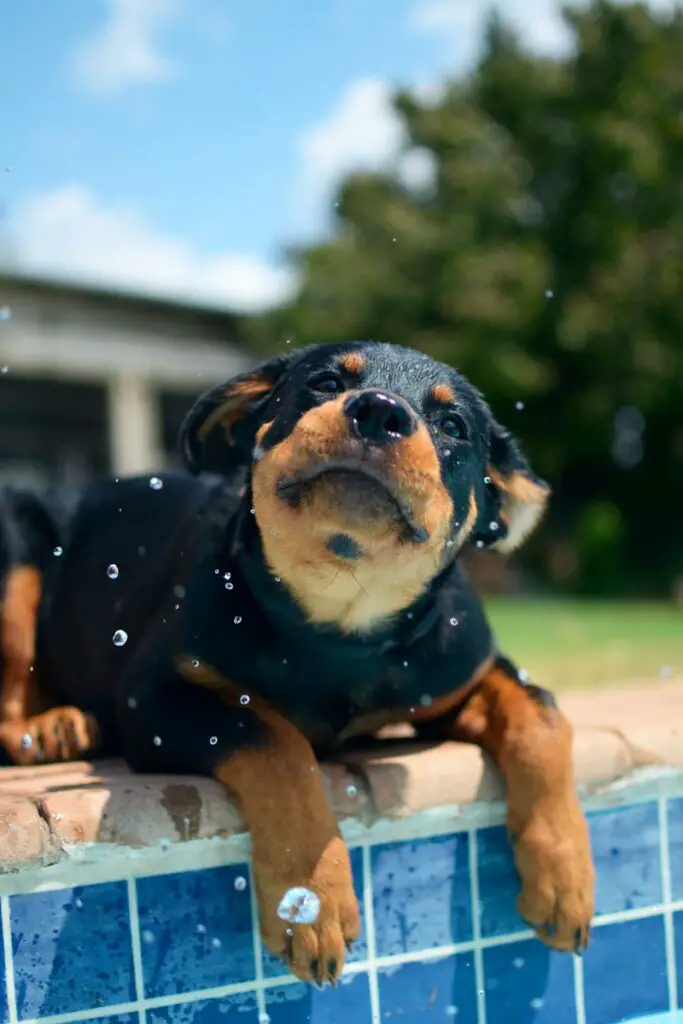Ways to Train the Rottweiler to Bond with a Cat

From our experience, we have seen most cases of the Rottweiler-Cat bond pan out well. Even when there is a socialization gap, systematic training techniques can help bridge the barrier.
Nonetheless, we will look at some of the tried and tested ways to shape your Rottie into a cat-loving doggie.
Start with the Basics
The best starting point for the Rottweiler training is the “sit” and “look” commands. Never forget the significance of reinforcement of positive behavior. This measure can significantly improve the speed and quality of the training process.
An easy way is to make the dog look at a tasty treat and bring it down. Once they are in the sitting position, feed them the snack. Next time you say sit, they will obey for sure. The tone of voice is crucial here. Say it assertively but not overly aggressive.
Similarly, you can train them to respond to the “look” command. Make them look at the treat. Bring it in such a position that the snack is near the front of their nose and move it away in a straight line. Bring up the snack/treat between your eyes and utter the command “look!.”
Next time you repeat this command, they will stare at you without fail. These two commands are beneficial to prevent the chasing tendencies when they see the cat.
You can use the commands to create a redirection in the minds of the Rotties. Feed them or pat them each time they restrain from their natural tendencies of aggression towards other animals.
Make them Master the Art of Ignorance
Using this technique, you can train your dog to ignore a cat’s presence in the vicinity. Before starting with this activity, ensure your dog is leashed to avoid unpredictability. Rotties can get excited and riled up when they notice other animals like cats. The idea is to reward them for being calm and not getting too hyper around felines.
With the help of a friend, colleague, or family member, bring a cat near you and your Rottie. Check the dog’s reaction. If they jump in excitement, pull the leash and give an assertive “look!” command. As they look at you, indirectly, a distraction is created for them to calm down. Reward dogs with a treat when they behave themselves. With time, they will learn to be neutral and ignorant of the cat’s presence. You can follow up this step by allowing the cat to roam around in the room while the dog is under supervision.
The point to remember is that these experiments may not be entirely fruitful in the first few attempts. As loving pet parents, be patient, trust the process, and you will start seeing your dog making good progress.
Socialize from Puppy Phase
The training process becomes so much easier when you start socializing your Rottweiler from an early age. Taking them for walks to get a hold of the happenings in the outside world regularly is a good starting step.
Enabling interactions with other animals by taking them to dog daycare centers is another helpful activity you can do. Being in the vicinity of different animals in multiple age ranges can make them more adaptable.
If you have any friends or relatives who own cats, you could take your pup to their home on some excellent kitty exposure. Notice their reactions.
These are some simple yet significant steps to lay a solid foundation in building a strong dog and cat bond. As mentioned earlier in this article, the introduction is crucial for this relationship to work out as intended. In the next section, we will look into a few action points you can adopt to ace the initial phase.










